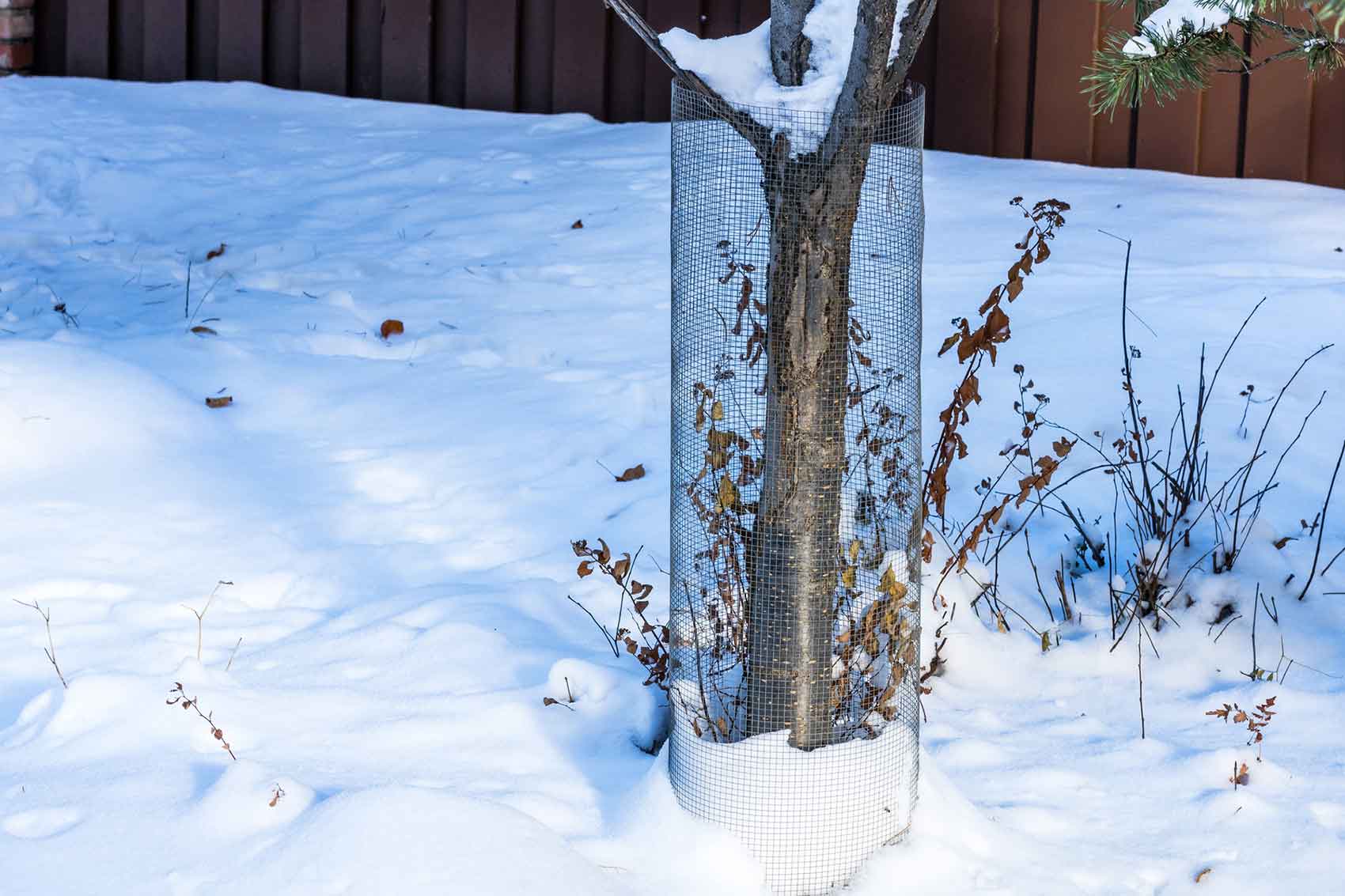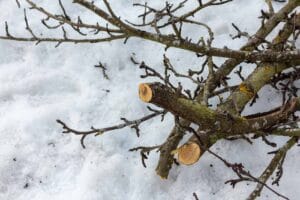
We plant a tree, but we often forget the most important thing: its trunk. Yet, it’s the trunk that supports everything. A damaged or weakened trunk can slow the tree’s growth, or worse, expose it to irreversible diseases.
In this article, we explain why protecting a tree trunk is important, and above all, how to make the right choices to keep your trees in great shape, year after year.
Why should a tree trunk be protected?
The trunk isn’t just the tree’s support; it’s also its lifeline. It transports nutrients, protects internal tissues, and supports the entire structure. But it’s also highly exposed: to bites from small animals, cuts from lawnmowers, cracks caused by frost, or sunburn.
What are the best methods to protect a tree trunk?
Protecting a tree trunk isn’t complicated—you just need to know the right tools. The important thing is to choose a method that respects your tree’s natural growth while protecting it from external aggressions.
Here are the main methods of protecting a tree trunk:
Staking: Ideal from the moment you plant the tree, it keeps the trunk straight and stabilizes it against wind or unstable soils.
Protective sleeves or sheaths: Spiral or perforated, they act like armor against bites, scratches, and mechanical shocks, and are particularly useful in winter.
Liming: This traditional technique involves applying a layer of lime to the lower part of the trunk to repel insects and regulate the temperature.
Physical barriers: Wire mesh or temporary fences can provide effective protection when working nearby or in the presence of animals.
Mulch: Adding mulch around a tree helps retain soil moisture, reduce weed growth, and protect the roots from temperature fluctuations. It also indirectly helps protect the trunk, since its presence will prevent you from driving too close to it with your lawnmower or trimmer!
How to choose the right tree trunk protection for your environment?
The right choice depends mainly on where your tree is growing and the challenges it faces on a daily basis.
In the city, it’s best to choose a discreet but durable protection that can withstand lawnmower damage or everyday bumps. In wooded areas or the countryside, you need to consider rodents, deer, and other curious animals. For a newly planted young tree, the ideal is a flexible, lightweight protection that can grow with it without suffocating it.
Common mistakes to avoid when protecting a tree trunk
Even with all the good will in the world, poor protection (poorly chosen or poorly installed) can do more harm than good.
Here are the most common mistakes to avoid to keep your tree healthy:
- Overtightening the protection: If the guard is too narrow, it can strangle the trunk as it grows, blocking its natural development.
- Using non-breathable materials: Moisture can promote rotting.
- Forgetting to monitor: Leaving protection in place too long without checking can render it useless—or even harmful.
- Direct contact with the bark: Without a bit of air in between, the trunk can overheat or remain too damp.
When to install tree trunk protection?
Ideally, you should install protection as soon as you plant the tree. Before winter is also an excellent idea: the cold, rodents, and temperature fluctuations put a strain on the trunk.
Give your trees the future they deserve!
A well-protected trunk is a thriving tree. For advice tailored to your property and professional service, contact Émondage SBP. Our team is here to guide you, advise you, and care for your trees as if they were our own. Contact us today – your tree will thank you!
Sources :
Mon jardin bio. Comment protéger les troncs et les départs des charpentières ? [How to protect trunks and branches from carpenter ants?]
Ville de Laval. Protégez vos arbres durant vos travaux. [Protect your trees during your work].



